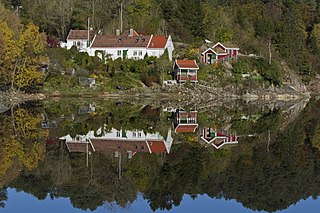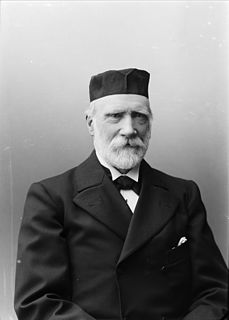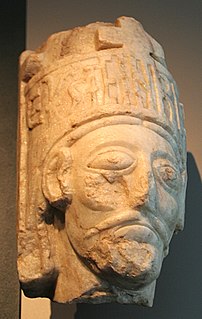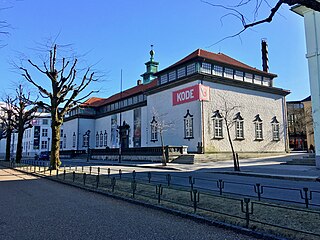

Georgernes Verft is an area located on the peninsula of Nordnes in Bergen, Norway. It was named after the shipyard that used to operate in the area. Over time the surrounding area was populated by shipyard workers and is still known as Verftet. Today a large residential complex dominates the area. [1]

Nordnes is a peninsula and neighbourhood in the city centre of Bergen in Hordaland county, Norway.

Bergen, historically Bjørgvin, is a city and municipality in Hordaland on the west coast of Norway. At the end of the first quarter of 2018, the municipality's population was 280,216, and the Bergen metropolitan region has about 420,000 inhabitants. Bergen is the second-largest city in Norway. The municipality covers 465 square kilometres (180 sq mi) and is on the peninsula of Bergenshalvøyen. The city centre and northern neighbourhoods are on Byfjorden, 'the city fjord', and the city is surrounded by mountains; Bergen is known as the 'city of seven mountains'. Many of the extra-municipal suburbs are on islands. Bergen is the administrative centre of Hordaland, and consists of eight boroughs: Arna, Bergenhus, Fana, Fyllingsdalen, Laksevåg, Ytrebygda, Årstad, and Åsane.

Verftet is a neighbourhood of Bergen, Norway. It is located on the Nordnes peninsula. It is the location of Georgernes Verft.
Contents
The yard was established in 1784 by Georg Brunchorst and Georg Vedeler thus explaining the name "Georges' shipyard". In the 1850s the yard was taken over by Ananias Dekke who modernized the site and built a new dock. The shipyard was known to have produced some of the fastest sailships in the world and also supplied ships to the Royal Danish Navy and Royal Norwegian Navy. The production of wooden sailing ships continued until the late 1800s when steel ships became dominant. [2] [3]
Ananias Christopher Hansen Dekke was a Norwegian ship designer, ship owner, art collector and politician. He was the most significant designer of wooden sailing ships in Norway in the second half of the 19th century.

The Royal Danish Navy is the sea-based branch of the Danish Defence force. The RDN is mainly responsible for maritime defence and maintaining the sovereignty of Danish, Greenlandic and Faroese territorial waters. Other tasks include surveillance, search and rescue, icebreaking, oil spill recovery and prevention as well as contributions to international tasks and forces.

The Royal Norwegian Navy is the branch of the Norwegian Armed Forces responsible for naval operations of the state of Norway. As of 2008, the RNoN consists of approximately 3,700 personnel and 70 vessels, including 5 heavy frigates, 6 submarines, 14 patrol boats, 4 minesweepers, 4 minehunters, 1 mine detection vessel, 4 support vessels and 2 training vessels. The navy also includes the Coast Guard.
Upon the end of the yard its owner turned to the expanding knitting industry and established a prosperous factory of 3000 m². This building still stands largely unchanged. At the start of the 1900s, the knitting industry needed a bigger factory and had to move to a location outside Bergen. This coincided with the rapid expansion of the sardine industry and in 1910 United Sardine Factories Ltd. (USF) was established. The production of canned goods also expanded the industrial area to 15000 m². Most of these buildings are still intact.

Knitting is a method by which yarn is manipulated to create a textile or fabric, often used in many types of garments.

"Sardine" and "pilchard" are common names used to refer to various small, oily fish in the herring family Clupeidae. The term "sardine" was first used in English during the early 15th century and may come from the Mediterranean island of Sardinia, around which sardines were once abundant.
The canning industry was restructured and the USF factory disbanded in 1983. The property owner AS Norwegian Preserving Company opened parts of the old sardine factory to artists in the following year. A close cooperation between the landowner and the artists resulted in an innovative and cross-genre collective of art and other culture in the USF Verftet cultural center (USF - Kulturhuset). [4]















